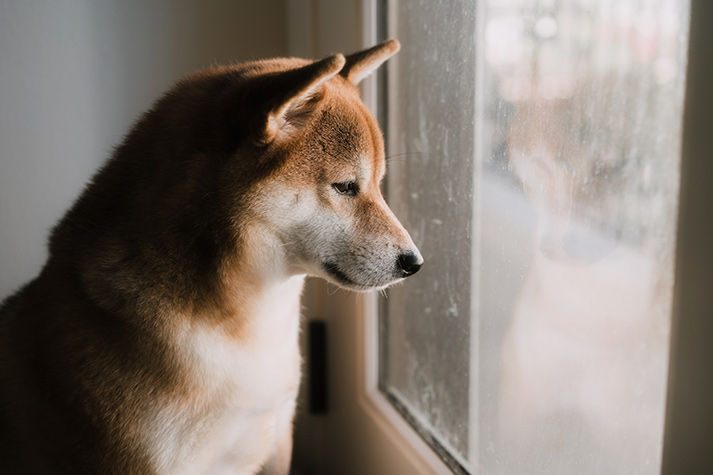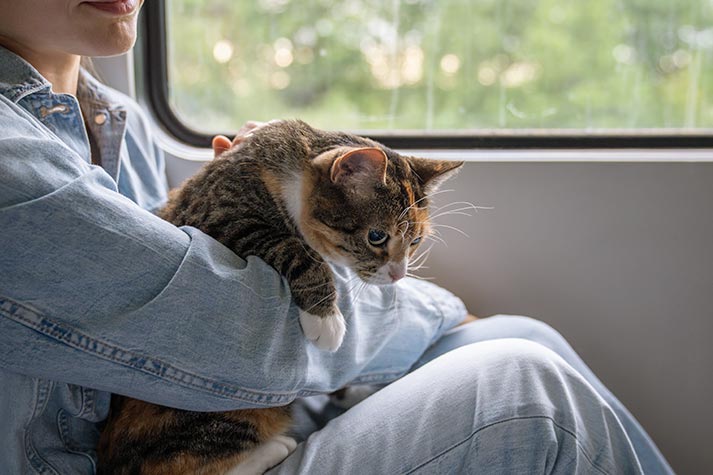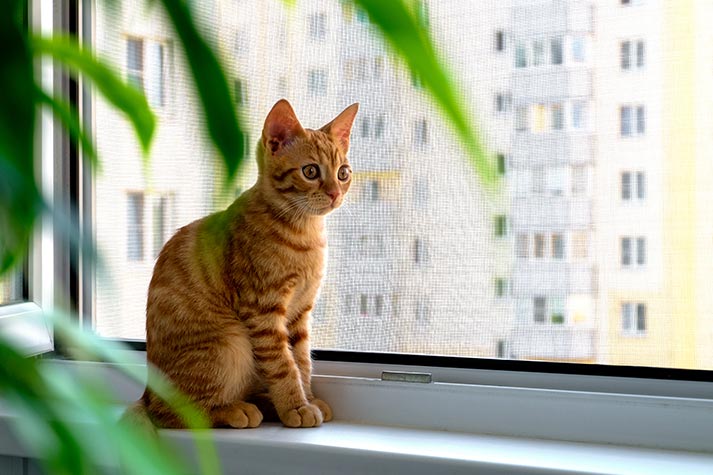
27 Oct
How to Train Your Pet to Cope with Separation Anxiety
Pets are incredibly perceptive and responsive to emotions. Creatures of habit, dogs and cats thrive on routine and are deeply affected by the presence or absence of their owners.
This can often result in separation anxiety, particularly when they experience a sudden change in environment. Whether it is after a long-distance relocation or simply when you leave for work, there will be times when your pet must be left alone.
Like humans, pets require time and space to acclimate to a new environment, especially when transitioning from a familiar space to an unfamiliar one. In such situations, separation anxiety can arise, making it essential for pet owners to take the right approach to help their furry companions adjust.
Much like caring for a young child, acclimating your pet to a new routine should be a gradual process. Patience and consistency are key in making them feel safe and secure in their surroundings.
Here’s How to Help Your Pet Adjust
Familiarizing Them with Their Environment
A new space can feel overwhelming for a pet. Without familiar sights or scents, their surroundings may seem foreign, making them anxious or unsettled. The best way to help them adapt is by allowing them to explore at their own pace.
Think of it this way: when people move to a new home or city, they take time to familiarize themselves with the neighbourhood before they feel comfortable. Similarly, new parents often introduce their infants to their living space gradually to foster a sense of security. Pets require the same approach.
Encourage exploration by allowing your pet to roam freely within safe areas of the home. Let them sniff, observe, and take in the space without rushing the process. This natural curiosity helps them build confidence and familiarity, easing their transition.
Leaving Them Alone for the First Time
One of the most challenging aspects of relocation is leaving your pet alone for the first time. In a new environment, you are their primary source of familiarity and comfort. Being separated, even for short periods, can trigger anxiety.
To ease this transition, start by leaving your pet alone for brief durations—such as stepping out for a quick errand. Short, consistent absences help reinforce the idea that you will always return. Over time, this reassurance builds trust, making them feel more secure even in your absence.
Providing Reassurance Through Attention
Pets need love and reassurance, especially when adjusting to a significant change. During this period, your attention plays a crucial role in reducing stress and reinforcing a sense of security.
Dedicate time each day to activities your pet enjoys, whether it’s going for a walk, engaging in playtime, or simply sitting together. If your pet had specific routines or favourite pastimes in their previous home, maintaining these activities can provide a comforting sense of continuity. Simple gestures like cuddles or a gentle scratch behind the ears can go a long way in soothing their nerves.
Creating a Safe Space
One of the most effective ways to help your pet cope with separation anxiety is by designating a safe and comfortable space within your home. This could be a cozy corner with their favourite bed, toys, and a blanket that carries your scent.
A familiar and secure area can provide comfort when they are alone, reducing anxiety and reinforcing a sense of stability. Gradually introducing them to this space when you are present helps build positive associations, making it their go-to spot for relaxation even in your absence.
The Importance of Love and Affection
Pets do not understand the complexities of moving or why their environment has changed. What they do recognize, however, is love and compassion. Adjusting to a new space can be confusing and even frustrating for them, but your patience and support will make all the difference.
By approaching their transition with understanding and care, you can help your pet feel safe and secure, reducing separation anxiety over time. Gradually, they will learn to be comfortable in their new surroundings and develop confidence in spending time alone.
Separation anxiety often stems from unfamiliarity, causing stress when a pet is left alone in a new environment. While it may be difficult to witness your pet’s distress, a combination of gradual training, patience, and affection can make the adjustment process smoother. With time, your pet will learn to navigate their new space with ease and confidence, ensuring their well-being and your peace of mind.






AUTHOR’S BIO
Carry My Pet
Passionate pet enthusiasts and globetrotters, dedicated to easing furry friends' journeys worldwide. Penning tales of compassion at CarryMyPet, where every relocation is a tail-wagging adventure.